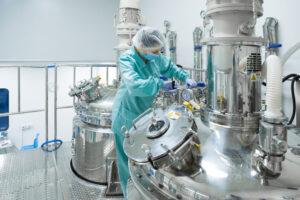 Testing the purity of substances is one of the most important tasks chemical manufacturers are faced with. If an impure substance is used, it could cause adverse effects. For example, a 2012 fungal meningitis outbreak that caused the deaths of 48 people was traced back to a pharmacy that hadn't been using proper cleaning and maintenance techniques. If the pharmacy had taken more time to use proper methods in the lab, including assessing the purity of the substances used in the drug that caused the outbreak and proper GMP storage conditions, the disaster could have been prevented. So, how do chemical manufacturers assess purity? Let's take a look at a few common methods used in today's labs.
Testing the purity of substances is one of the most important tasks chemical manufacturers are faced with. If an impure substance is used, it could cause adverse effects. For example, a 2012 fungal meningitis outbreak that caused the deaths of 48 people was traced back to a pharmacy that hadn't been using proper cleaning and maintenance techniques. If the pharmacy had taken more time to use proper methods in the lab, including assessing the purity of the substances used in the drug that caused the outbreak and proper GMP storage conditions, the disaster could have been prevented. So, how do chemical manufacturers assess purity? Let's take a look at a few common methods used in today's labs.
Chromatographic methods: Analytical methods, like chromatography, generally involve chemical analysis to detect any impurities that may be present in the given sample. Chromatographic methods may use different forms, like gas or liquid, but all have the goal of detecting the presence, identity, and amount of any impurities present in samples like radiolabeled compounds. Chromatography involves separating individual components within the sample, which can be especially beneficial when it comes to finding and classifying impurities.
Comparison methods: Perhaps one of the easiest ways chemical manufacturers can assess purity is by simply comparing the substance with another substance that has been checked for purity already. Visual comparisons can reveal impurities like debris or color differences while other tests, like smell or taste, can be used to find impurities that may be less easy to detect. Overall, any noticeable differences when two samples are compared generally indicate that there are impurities present.
Testing physical properties: When a substance has been certified as pure, it will have a specific melting and boiling point that can be tested and confirmed. So when a substance is being tested for purity, manufacturers can test its melting and boiling points. If it has been stored under GMP storage conditions and passes other purity tests, it should melt or boil at the predetermined points. If it does not, then the substance is not pure. The presence of impurities will cause changes in the melting and boiling points of a substance.
Accurately assessing the purity of substances is important not only for the quality of a substance but for the overall safety of those exposed to the substances as well. By using these methods, chemical manufacturers can ensure a substance is certified as pure before it is used.
